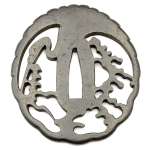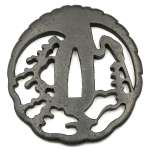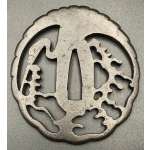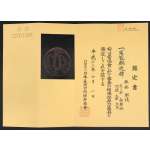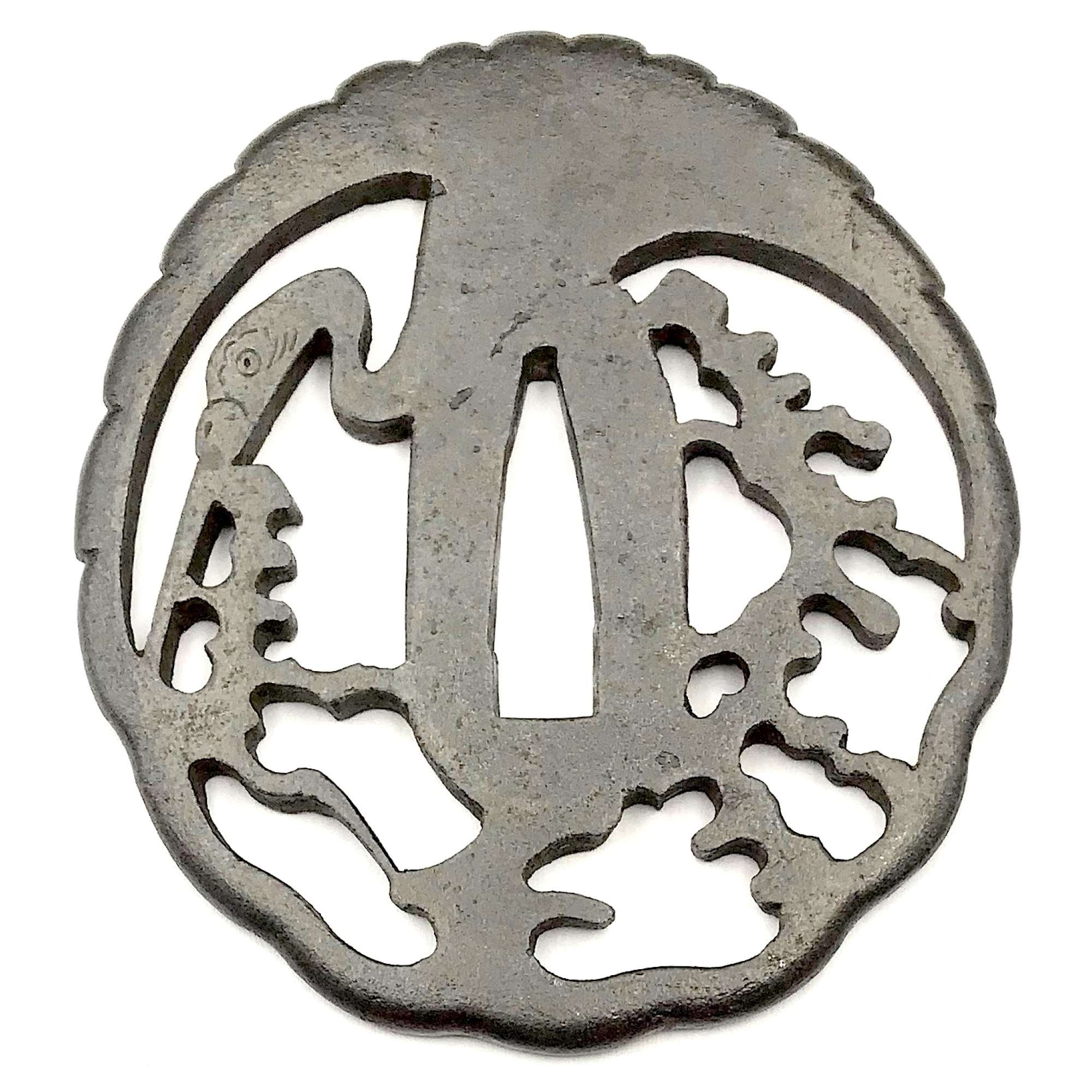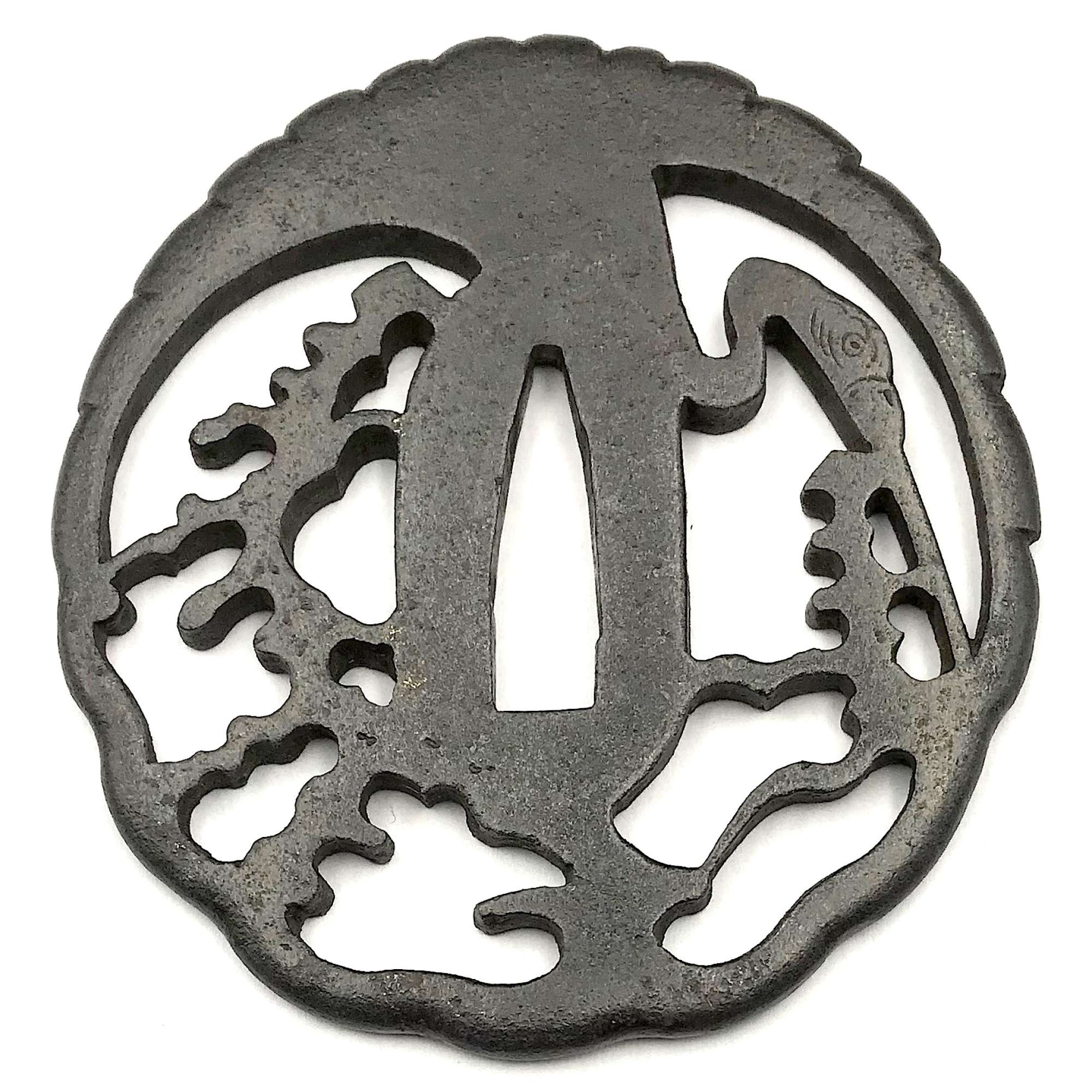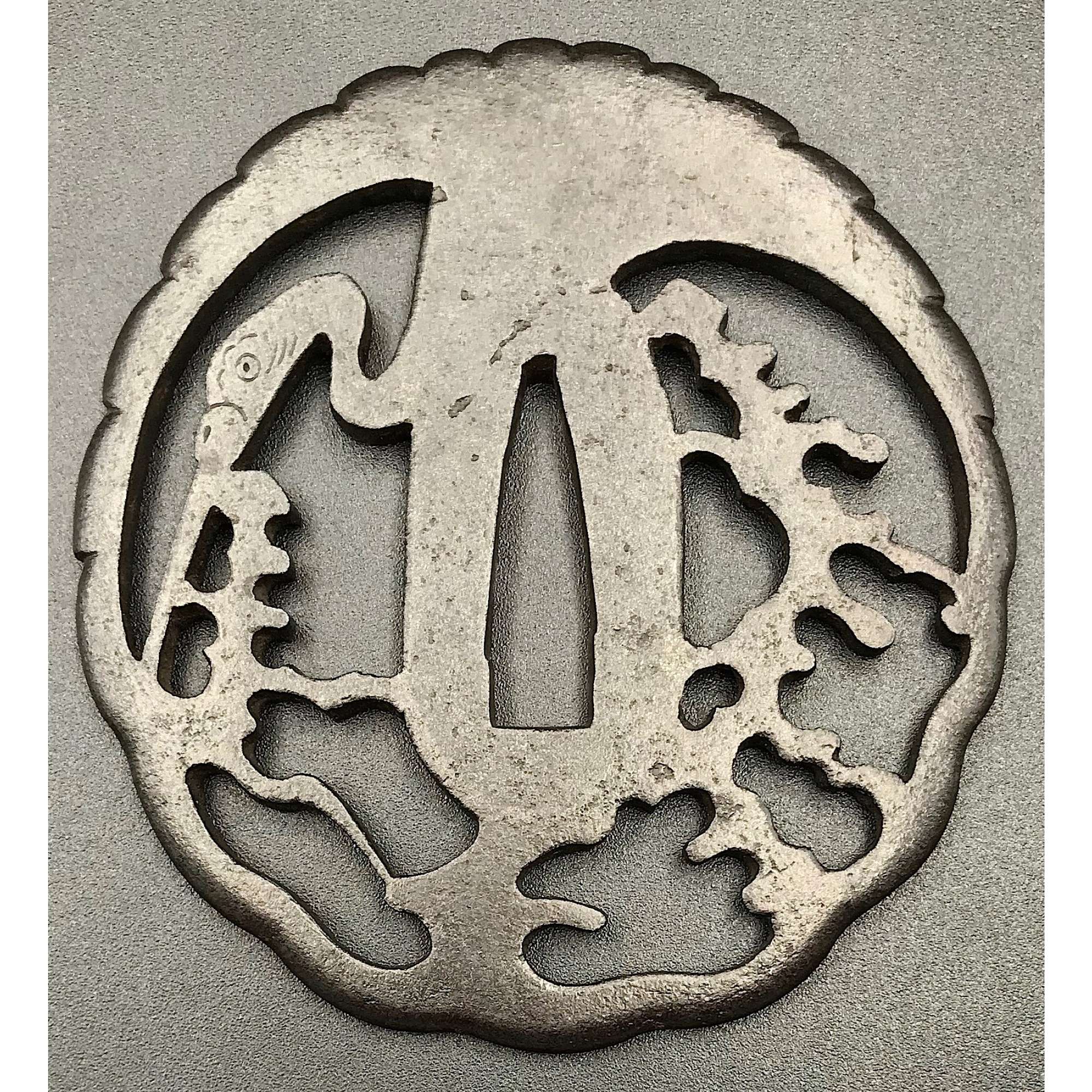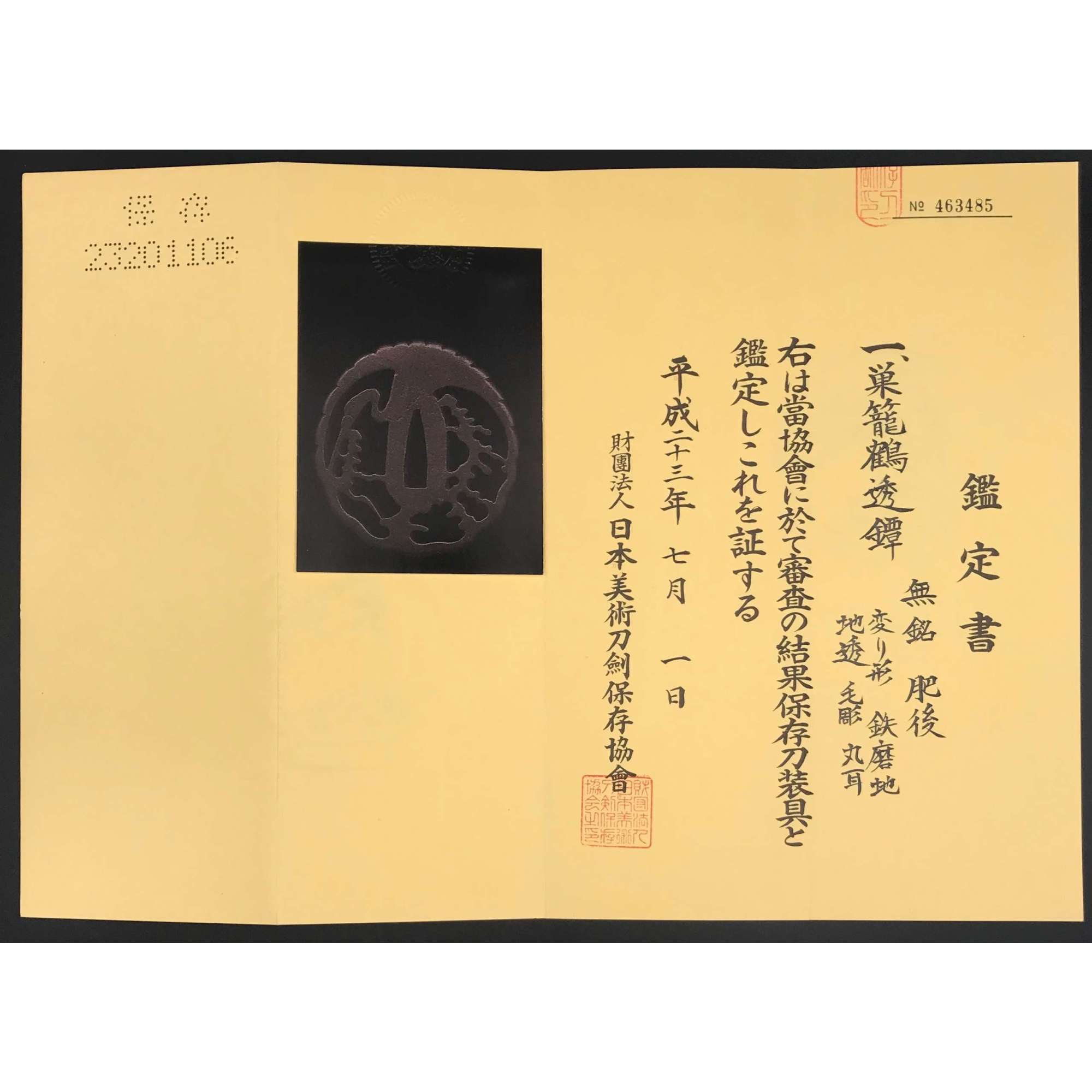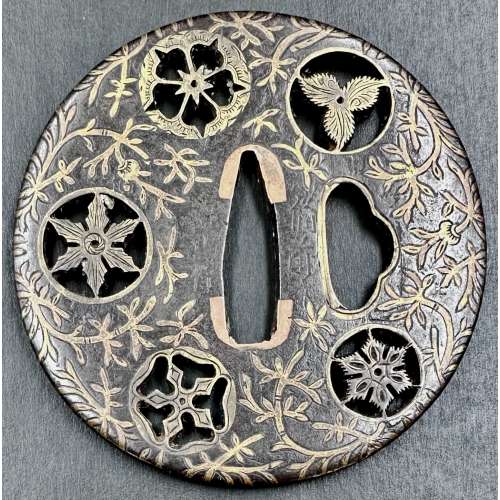Iron tsuba of round form (tsurumaru) decorated with a design of crane and pines, or “nesting crane (sugomori-tsuru)” in openwork (sukashi). Details carved in kebori. Rounded rim.
Size: 74.7 x 69.8 x 4.8 mm.
Unsigned.
Edo period, ca. 17th century.
NBTHK Certificate № 463485.
The certificate says it’s a Higo School piece. The design was popular in both Akasaka and Higo schools.
The Akasaka example: at Kodogu and tsuba. International collections not published in my books. (Toso Soran). Ph. D. Kazutaro Torigoye, 1978, p. 246: “Late Edo. Jiyūgata. Sined: Akasaka Tadanori saku.”

Torigoye, 1978, p. 246. Late Akasaka.
The Higo example can be found at Iron tsuba. The works of the exhibition “Kurogane no hana”, The Japanese Sword Museum, 2014, p. 69, №56: Sugomori-tsuru sukashi-tsuba (Nesting Carne). Mumei: Matashichi (1st generation), early 17th century.

Kurogane no hana, 2014, p. 69, №56. Higo tsuba.


